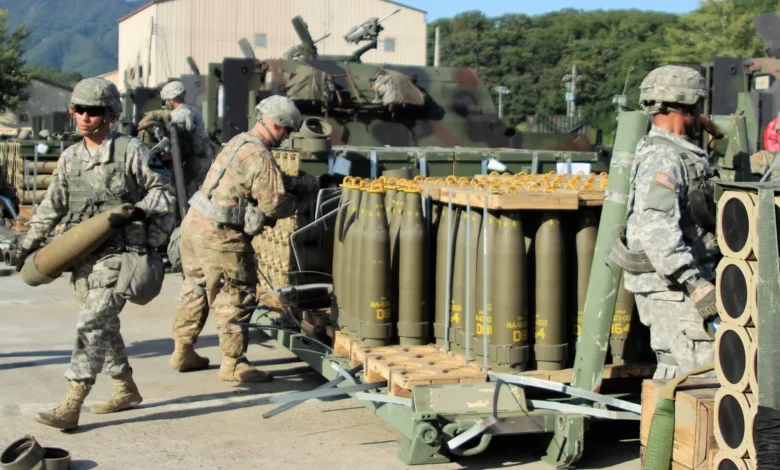
National Defense Industrial Strategy: Building the Backbone of National Security
National Defense Industrial Strategy: The concept of the national defense industrial strategy goes far beyond factories, machinery, and workforce dynamics. It’s a living, breathing roadmap for a nation’s military readiness, technological edge, and long-term ability to respond to evolving threats. In today’s complex global landscape, where security challenges are multifaceted and rapid innovation shapes battlefields, the importance of a coherent and resilient national defense industrial strategy cannot be overstated.
Defense isn’t just about tanks and missiles anymore. It’s about robust supply chains, adaptive manufacturing, dual-use technologies, cyber resilience, and public-private collaboration. Governments around the world are realizing that national strength starts with industrial might. And when it comes to national defense, industrial strategy is the bridge between policy and performance.
Understanding the Core of National Defense Industrial Strategy
At its heart, a national defense industrial strategy is the blueprint that connects defense policy with the means to implement it. It ensures that a nation can build, maintain, and deploy the necessary tools for defense when and where they’re needed. This means having not just a capable military, but also the industrial infrastructure to sustain it through crises, conflicts, and long-term global competition.
The strategy often outlines how a nation intends to maintain industrial readiness. This includes prioritizing investments in critical technologies, fostering domestic manufacturing, securing supply chains, and building partnerships across sectors. It also includes contingency planning for emergencies, whether from natural disasters, cyberattacks, or geopolitical tensions that could disrupt defense production and logistics.
The Evolving Threat Landscape and Why Strategy Matters
Modern threats are asymmetric, hybrid, and technologically sophisticated. Gone are the days when military dominance alone could guarantee security. Now, cyber warfare, artificial intelligence, and space capabilities are all part of the new defense equation. That’s where the national defense industrial strategy steps in—to ensure that defense industries can pivot and respond to these shifts.
In this dynamic environment, the traditional defense contractor model is being replaced—or at least supplemented—by agile startups, software innovators, and AI companies. Governments need to rethink how they engage with these new players. That’s a big part of what a forward-thinking national defense industrial strategy does: it sets up frameworks to support innovation while maintaining security and accountability.
Domestic Manufacturing and Supply Chain Resilience
The COVID-19 pandemic brought global supply chain vulnerabilities into sharp focus. When it comes to defense, these vulnerabilities can be dangerous. Imagine not being able to source critical materials for jet engines or microchips for communication systems. A robust national defense industrial strategy addresses these issues head-on.
Domestic manufacturing is a cornerstone of this strategy. By nurturing in-country production capabilities for vital components, nations reduce their dependence on foreign suppliers. This doesn’t mean isolationism—it means strategic autonomy. It’s about having the option to act independently in times of crisis.
Innovation and Emerging Technologies
Defense industries have always driven innovation. From GPS to the internet, many of today’s technologies have military origins. The national defense industrial strategy ensures this tradition continues by prioritizing investment in R&D, supporting high-tech ecosystems, and encouraging collaboration between defense agencies, academia, and private enterprise.
Emerging technologies like quantum computing, AI, hypersonics, and biotechnology have enormous implications for national defense. If a nation isn’t at the forefront of these developments, it risks falling behind. A clear national defense industrial strategy creates a path to harness these technologies for military advantage while also managing the risks they pose.
Public-Private Partnerships and Workforce Development
The industry doesn’t operate in a vacuum. Neither does the military. That’s why partnerships between the public and private sectors are essential to any successful national defense industrial strategy. Governments must create incentives for companies to invest in defense projects, and industries must align with national priorities.
This also includes investing in the workforce. Skilled labor is a national asset. Training the next generation of engineers, scientists, and technicians is as important as acquiring new weapons systems. A vibrant national defense industrial strategy invests in education, apprenticeships, and technical programs that feed the defense pipeline.
Sustainability and Environmental Considerations
Modern defense strategies cannot ignore environmental impacts. From fuel consumption to the carbon footprint of manufacturing, sustainability is becoming a key factor in long-term defense planning. The national defense industrial strategy must incorporate green technologies, energy-efficient systems, and lifecycle assessments of equipment.
Sustainability doesn’t just help the planet it enhances operational resilience. For example, renewable energy solutions can reduce the need for vulnerable supply lines in the field. Green innovation is no longer a luxury in defense it’s a necessity.
Cybersecurity as an Industrial Imperative
In an age of digital warfare, cybersecurity is foundational. It’s not enough to have strong firewalls at military bases. Every contractor, supplier, and software vendor involved in the defense ecosystem must meet rigorous cyber standards. A well-crafted national defense industrial strategy mandates this level of discipline.
Cyber resilience protects not only military data but also the intellectual property that underpins defense innovation. Strategies must include frameworks for continuous monitoring, threat intelligence sharing, and rapid incident response. The digital front line is just as critical as the physical battlefield.
International Cooperation and Strategic Alliances
No country stands alone in today’s interconnected world. The national defense industrial strategy often includes provisions for working with allies to ensure interoperability, shared standards, and joint development of critical systems. These alliances can amplify national capabilities and build deterrence.
International collaboration also strengthens industrial bases. Through programs like cooperative R&D and cross-border supply chains, allied nations can pool resources and reduce duplication. The key is to balance openness with security sharing enough to benefit, but protecting what must remain sovereign.

Funding and Policy Alignment
A brilliant strategy means nothing without funding. Budgetary alignment is crucial. Policymakers must ensure that financial resources support the strategic vision. This includes long-term commitments, not just annual appropriations.
Policy alignment also matters. Economic policies, trade agreements, tax incentives, and even immigration laws can affect the success of the national defense industrial strategy. An integrated approach ensures that all levers of government are pulling in the same direction.
Challenges and Roadblocks
Every strategy encounters obstacles. Some nations face skills shortages. Others deal with aging infrastructure or political instability. There’s also the constant risk of overregulation or bureaucratic delays that stifle innovation. Identifying these challenges is the first step toward overcoming them.
Transparency and accountability are key. The best national defense industrial strategies include mechanisms for review, audit, and course correction. Adaptability is just as important as ambition.
Measuring Success and Evolving with Time
Success isn’t measured solely by how many tanks are built or planes delivered. It’s about readiness, responsiveness, and resilience. Metrics should include the speed of innovation adoption, workforce development, supply chain robustness, and cyber defense effectiveness.
A national defense industrial strategy is not a static document. It must evolve as threats evolve. Regular updates, stakeholder engagement, and lessons from real-world events all contribute to keeping the strategy relevant and impactful.
Final Thoughts: Why It All Matters
At the end of the day, national defense is about more than just the military. It’s about the economy, innovation, education, and societal resilience. The national defense industrial strategy is the connective tissue between these elements. It ensures that a country is not only protected but prepared.
In a world where conflict can be digital, economic, or existential, having a strong and adaptable industrial base is non-negotiable. That’s why the national defense industrial strategy deserves the spotlight it’s not just a defense document. It’s a national priority.







